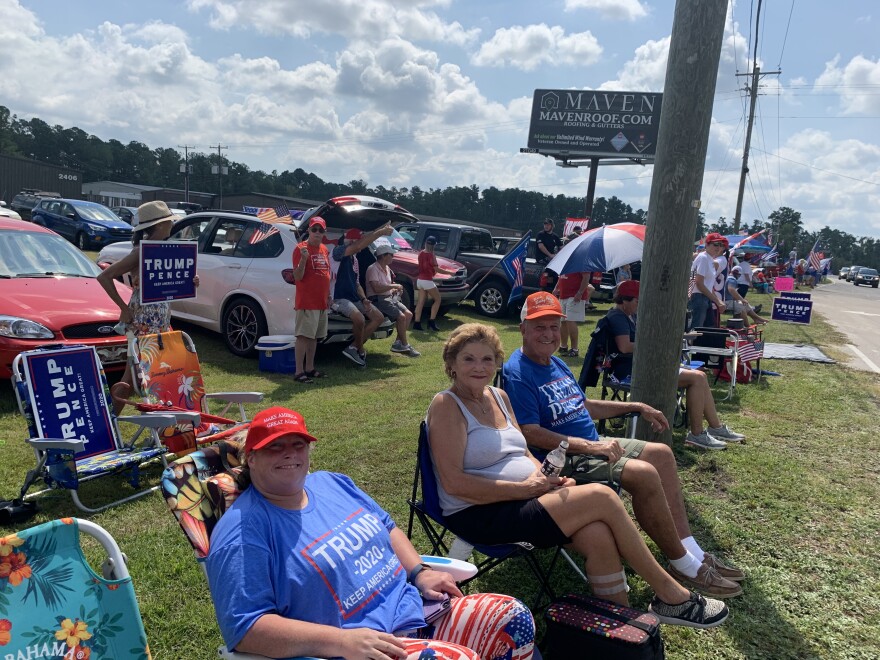President Donald Trump paid his first visit to the Cape Fear region Wednesday during the 2020 election season. His agenda: to declare Wilmington the first official World War Two Heritage City. But it’s an opportune time and place for the Republican incumbent; since North Carolina is a battleground state with a slight Republican lean, it’s likely this is only the first of a series of visits from the candidates.
North Carolina is also the first state to mail out absentee ballots. The state Board of Elections reports slightly more than half a million absentee ballot requests since August 30th. Voters have until October 27th to request a ballot.
While there is a clear Republican lean in North Carolina, it’s a complicated state. There are nearly seven-point-one million registered voters in North Carolina and a slight majority -- about two-and-a-half million -- are registered Democrats. The next highest voter bloc – at about two-point-four million are unaffiliated. Registered Republicans in North Carolina number about two-point-one million.
Most of those seven million-plus voters are white. Black voters, as of August, only account for about 21% of the state’s registered voters. Other ethnic minorities make up even smaller blocs: those who identify as Hispanic number just 220-thousand. And female voters outnumber males by about half a million.
The Cape Fear region leans more Republican than the state as a whole. Most of the registered voters in Brunswick and Pender Counties are Republican. Then come the unaffiliated voters. Democratic voters are third. New Hanover County is a little more purple with its clear majority: 38% of voters are unaffiliated, then Republicans, then Democrats. But the registered Rs and Ds in New Hanover County are only separated by about one percentage point – so while purple, New Hanover County is probably a bit more magenta than violet.
What does all this mean for the presidential election, the U.S. Senate race, and the state and local contests that North Carolinians will decide by November 3rd?
Editor's Note: There is no straight ticket voting (STV) option (i.e. check one box to vote for all Republicans or Democrats) for the 2020 Election. North Carolina abolished STV in 2014 as part of 2013 legislation (HB 589). Registered voters will have select their chosen candidate(s) in each race.
Guest:
Josh Putnam, Ph.D., Political Scientist specializing in presidential campaigns; Founder of Frontloading HQ, an elections analysis blog; Contributor, FiveThirtyEight.com


